City of Christchurch moves from Recovery into Regeneration
Christchurch Cathedral January 2017
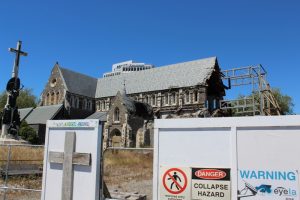
Following the earthquakes in Christchurch during 2011 that led to significant damage to the city and loss of life, a decision has been made on the future of the Christchurch cathedral in the centre of the city. Following years of the impasse between opposing parties, could this decision now signal a move forward from recovery into regeneration?
We take a look at the events that led to the decision and why the cathedral is critical to the regeneration of the City.
The Earthquake
On the 22nd February 2011, a 6.4 magnitude quake struck the city, and following damage to buildings in a previous quake during 2010, a number of buildings were already identified with the potential to collapse. 185 people died in the nation’s 5th deadliest disaster.
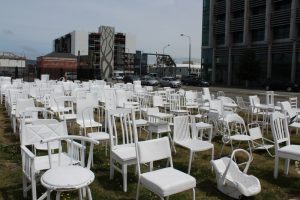
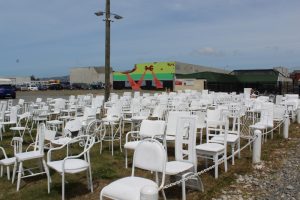
182 chairs for the 182 people that died during the earthquake
Events following the Earthquake
October 2011
Two subsequent earthquakes in 2011 further damaged the cathedral and in October 2011, the Trustees of the Church announced proposals to demolish parts of the building as the costs of repair was more than the cost of the insurance.
March-August 2012
Demolition commenced in March 2012 and in August 2012, the Great Christchurch Building Trust (GCBT) announced a High Court challenge of the demolition plans. The court put the demolition on hold in November.
That order was in place until July 2013 when a High Court ruling to lift it was upheld by the Appeal Court. In December 2013, the Supreme Court declined a GCBT appeal against that decision. Demolition was never resumed because the emergency quake powers had expired and it would require consent, which would be challenged in court by GCBT.
2014
In 2014, the Christchurch Central Recovery Plan was published by the City Council identifying actions to be taken to rebuild the city. The cathedral is central to the plan and to the city spatially.
Under the Canterbury Earthquake Recovery Act 2011, a Recovery Plan must be developed for the central business district (CBD). All decisions to be made following the time of the plan must be made in accordance with the requirements of the plan. it also required changes to be made to the city’s district plan. to ensure the objectives of the Recovery Plan were met.
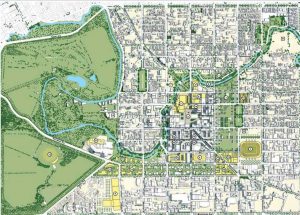
Christchurch Central Recovery Plan 2014
“The Christchurch Central Recovery Plan sets out a clear vision for the Square – an international centre and the heart of our city, with year-round activity, day and night. It’s a vision for a 21st-century city that points to a greener space, with buildings that inspire and activate, and the main square complemented by a series of smaller places[1]”.
July 2015
In July 2015, frustration became clear as the Earthquake Recovery Minister Gerry Brownlee wrote to the Trustees stating lack of progress on the future of the Cathedral was slowing down attempts by the city to regenerate. Cathedral Square landowners were reluctant to spend money on development next to a decaying site with an uncertain future.
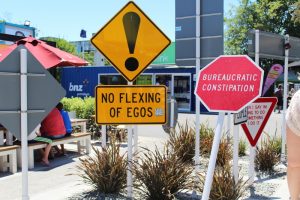

September 2015
In September 2015, the Minister appointed a negotiator to mediate between the Church Property Trustees and the Great Christchurch Building Trust. Both sides along with their engineers were asked to agree on the feasibility and cost of restoring the building or replacing it with a new cathedral.
It was identified that restoration would take until 2022 and cost $105m, while a new cathedral would cost about $66m and could be complete by 2019, Deans reported. Anglicans agreed to reconsider restoration of the cathedral in December 2015.
April 2016
Regenerate Christchurch was established to lead Christchurch from recovery to regeneration. The Greater Christchurch Regeneration Act 2016 sets out the functions[2] of the Regenerate Christchurch body. The Cathedral Square and its surrounds were identified as a key priority area and a regeneration strategy for the square and surround commenced.
June 2016
In June 2016 Brownlee appointed a working Group to come up with a fully costed and feasible plan for restoring the cathedral.
December 2016
The group delivered its non-binding recommendations to government in December 2016 which formed the basis of a restoration deal between the government and Anglican leaders. This deal was delayed and amended by the Government as requested by the Church Property Trustees.
July 2017
An amended a Cathedral reinstatement plan was put forward to all parties. The deal set out the funding mechanisms for the reinstatement including a $10 million Christchurch City Council pledge, a Great Christchurch Buildings Trust (GCBT) pledge of $13.7m, a $10m Crown cash contribution and a $15m government loan. $90 million was now secured. The offer also proposed new legislation, which would allow reinstatement of the cathedral to be fast-tracked, and a joint venture made up of the Church Property Trustees and a fundraising trust would govern and manage the reinstatement.
Cathedral Square January 2017
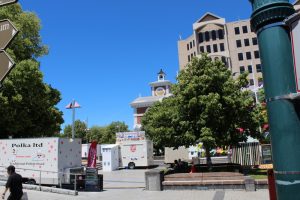
On 31 July 2017 Regenerate Christchurch published a draft concept and key moves for Cathedral Square and the surrounding area. Regenerate Christchurch.
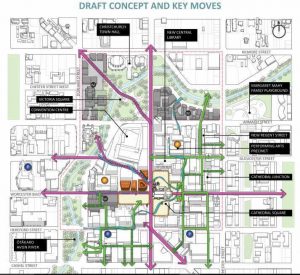
In its first annual report regenerate Christchurch, identified three priority areas including the Ōtākaro Avon River Corridor Regeneration Area, Cathedral Square and Surrounds, and Southshore and South Brighton.
September 2017
Bishop Victoria Matthews took the offer to the Synod in September 2017 who voted 55% in favour of reinstating the building with a basic design. It was announced that the project would cost $93 million and would take 10 years to build.
A week following the decision by the Synod, an agreement was signed outlining the project’s commercial, financial and legal terms and approximately $90 million of the restoration cost were already secured. The agreement identified that a new Restoration Trust would be formed that will be responsible for fundraising and managing the project, alongside the Church Property Trustees and an establishment group would be set up to develop the joint venture structure and a project plan.
December 2017
The Christchurch Cathedral Reinstatement Bill had its first reading in Parliament.06 December 2017, and the $10 million Christ Church Cathedral grant was approved by Christchurch City Council[3].
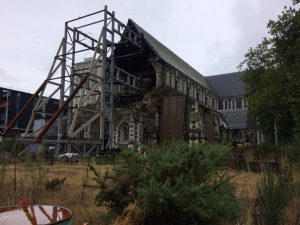
Christchurch Cathedral December 2017
February 2018
Now, we move to 2018 and the City Council are now considering raising rates by an average of 5.5 percent from July this year, to address the priorities in the Council’s draft Long Term Plan (LTP)(external link), which sets out the Council’s work programme and priorities for the next 10 years[4]. A proposal to introduce a new targeted rate to cover the Council’s $10 million special heritage contribution towards the reinstatement of Christ Church Cathedral is also included in the Long Term Plan.
“Deloitte calculates the total cost of the earthquakes will be more than $10 billion”
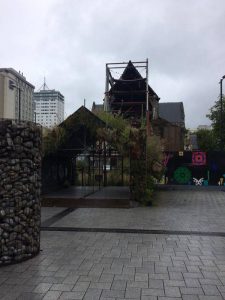
“There you have it. A couple of heritage blips aside, Christchurch should be able to pass as a functioning, disaster-free city by 2025[5]”
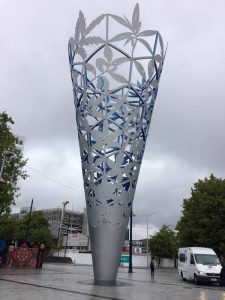
Cathedral and Square December 2017
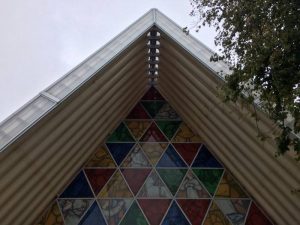
[1] https://ccc.govt.nz/the-council/plans-strategies-policies-and-bylaws/plans/central-city-recovery-plan
[2] http://www.legislation.govt.nz/act/public/2016/0014/32.0/whole.html#DLM6579202
[3] https://www.stuff.co.nz/the-press/news/99987766/10m-cathedral-grant-approved-by-council-despite-objections
[4] http://www.scoop.co.nz/stories/PO1802/S00182/rates-rise-under-consideration.htm
[5] https://www.stuff.co.nz/national/101602318/christchurch-2025-what-will-quake-recovery-look-like





